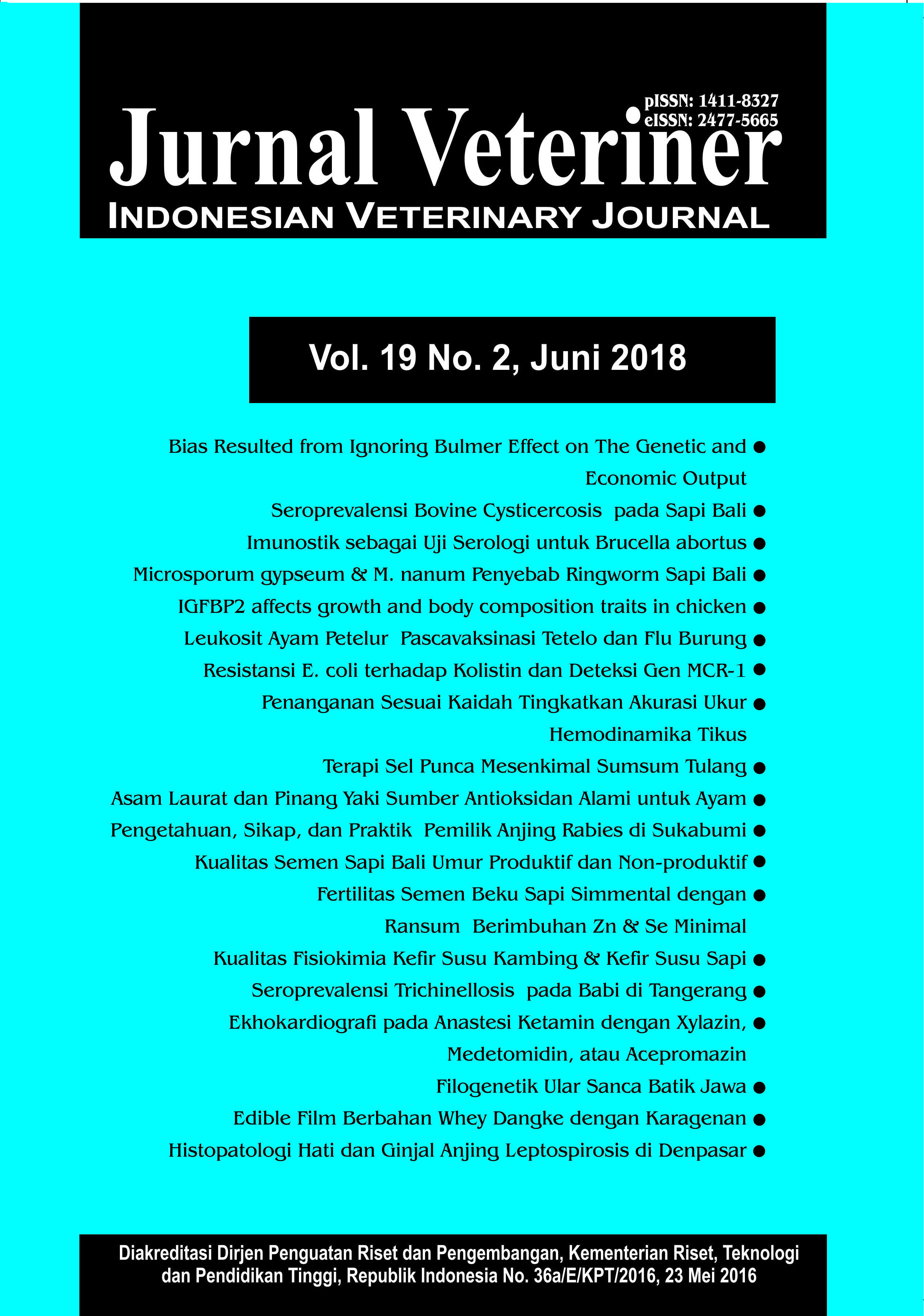Resistansi Escherichia coli terhadap Kolistin dan Deteksi Gen Mobilized Colistin Resistance-1 pada Ayam Pedaging Akibat Pemberian Kolistin Sulfat
(ESCHERICHIA COLI COLISTIN RESISTANCE AND DETECTION OF MOBILIZED COLISTIN RESISTANCE-1 GENE IN COLISTIN SULPHATE TREATMENT BROILERS)
Abstract
Colistin sulphate is the ultimate antimicrobial choice for the treatment of multidrug resistance gram negative bacteria infections with in human. The purposes of this study were to detect the presence of colistin resistant E. coli and mcr-1 gene in broiler and to transfer the mcr-1 gene to Salmonella enteritidis ATCC 13076. A total of 54 one day old broilers were divided into three groups that consists of 18 chicks broiler per group and raised up to 40 days old. The first group was used as control. The first treatment group was given colistin sulphate 5 ìg/g feed for 40 days and broilers in second treatment group was given 80.000 IU/kg body weight for first three days. Swab cloaca samples were taken every 10 days from each broiler. At age 40 days all chickens were slaughtered and meat samples were collected. Samples of cloacal swabs, fresh and cooked meat were examined for the presence of colistin resistant E. coli and mcr-1 gene. Susceptibility to colistin sulfate was conducted by agar dilution method, and detection of mcr-1 gene was conducted using polymerase chain reaction. The results showed that no colistin resistant E. coli was detected in the control group. Colistin resistant E. coli (27.78%) and mcr-1 gene (20.00%) were detected in animals in the first treatment group, respectively. Whilst 11.11% colistin resistant E. coli and 5.56% were carriying mcr-1 gene in the second treatment group. Colistin resistant E. coli were found 5.56% from raw meat samples and 3.70% had mcr-1 gene. Transfer of mcr-1 gene from colistin resistant E. coli to Salmonella enteritidis ATCC 13076 was success. These results showed the necessity of limitation usage of colistin sulphate in food animal.



















